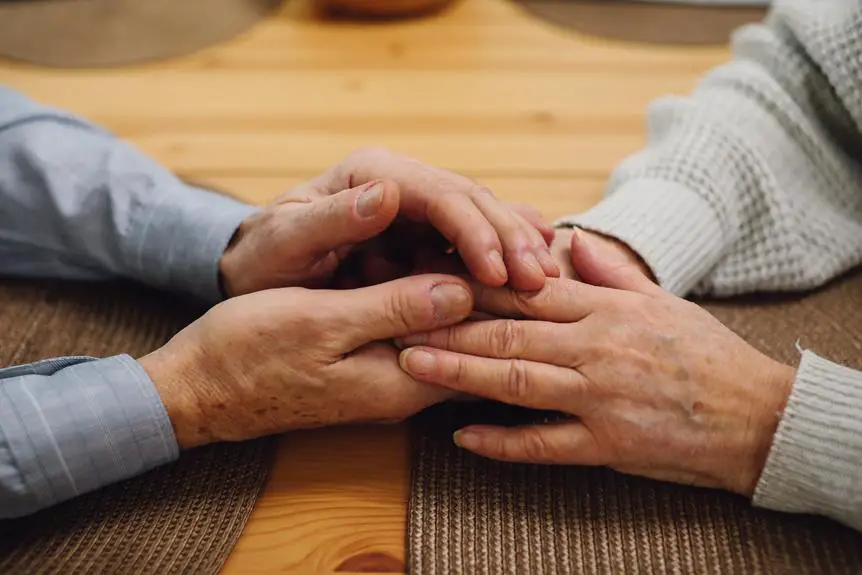Wondering which batting will best suit your placemats? Different types of batting offer unique advantages and considerations that can impact the look and feel of your finished project. Understanding the various options available and the factors to consider when choosing batting can help you make an informed decision.
From the pros and cons of cotton, polyester, wool, and blend battings to tips for selecting the best option for your placemats, this guide will provide you with the knowledge you need to achieve the desired results.
Whether you're aiming for durability, warmth, or a particular aesthetic, selecting the right batting is a crucial step in creating high-quality placemats.
Key Takeaways
- Thicker battings provide more insulation and padding, while thinner battings give a flatter, more traditional look.
- Consider the desired aesthetic and practical needs when selecting batting thickness for placemats.
- Different types of batting are made from various materials, so consider the characteristics of each material when choosing.
- Cotton, polyester, and wool are common types of batting, each with their own pros and cons to consider.
Understanding Different Types of Batting
When choosing batting for your placemats, understanding the different types available will help you make the best selection for your project. Batting thickness plays a crucial role in the functionality and appearance of your placemats. Thicker battings provide more insulation and padding, while thinner battings give a flatter, more traditional look. Consider your desired aesthetic and practical needs when selecting the thickness of your batting.
Quilting techniques also influence the choice of batting. If you plan to use intricate quilting patterns, a thinner batting will be easier to work with and will showcase your quilting stitches more prominently. Conversely, if you opt for simple quilting designs or no quilting at all, a thicker batting can provide a more substantial and cozy feel to your placemats.
Understanding the impact of batting thickness and quilting techniques on the final appearance and functionality of your placemats empowers you to make an informed decision. Take the time to consider these factors to ensure that your placemats turn out exactly as you envision.
Factors to Consider When Choosing Batting
Consider the functionality and aesthetic of your placemats when choosing the best batting for your project. When selecting batting for your placemats, several factors should be taken into consideration to ensure the desired outcome.
- Materials: Different types of batting are made from various materials such as cotton, polyester, wool, or a blend of these. Each material has its own set of qualities, benefits, and drawbacks. Consider the characteristics of each material and how they align with your placemat project.
- Thickness: The thickness of the batting will impact the overall look and feel of your placemats. Thicker batting provides more insulation and a plush appearance, while thinner batting offers a sleeker and more flexible finish.
- Durability: The durability of the batting is crucial for placemats, as they're subjected to regular use and washing. Consider the long-term wear and tear, and select batting that can withstand frequent use and cleaning.
Choosing the right batting for your placemats involves a thorough selection process that takes into account the various qualities, comparison of materials, and considerations for functionality and aesthetics.
Cotton Batting: Pros and Cons
When choosing batting for your placemats, you may be considering cotton batting, which offers both advantages and drawbacks. Cotton batting is popular due to its natural and eco-friendly properties. However, it's essential to weigh the pros and cons to make an informed decision.
Here's a breakdown of the pros and cons of cotton batting:
| Pros | Cons |
|---|---|
| Environmental impact: Cotton is a natural, renewable resource, making it an environmentally friendly choice for placemats. | Shrinkage: Cotton batting tends to shrink after washing, which may affect the appearance and size of your placemats. |
| Durability: Cotton is known for its durability, making it a long-lasting option for placemats that will withstand frequent use. | Washability: While cotton is washable, it may require more care during washing to prevent excessive shrinkage or distortion. |
Considering the environmental impact and durability of cotton batting, it can be a sustainable and resilient choice for your placemats. However, it's important to take into account the washability and potential shrinkage when making your selection.
Polyester Batting: Pros and Cons
When considering polyester batting for your placemats, it's important to note that it offers a breathable and lightweight option.
However, it's not heat resistant, so it may not be the best choice for hot dishes.
This type of batting has its advantages and drawbacks, and understanding both can help you make an informed decision for your placemat project.
Breathable and Lightweight Option
For placemats that require a breathable and lightweight option, a polyester batting provides several advantages and drawbacks to consider.
Polyester is a popular choice for those seeking a breathable fabric with insulation properties. It offers a lightweight option, making it easy to handle and work with.
Additionally, polyester batting is known for its breathability, allowing air to pass through and preventing the fabric from feeling stuffy.
On the downside, some may find that polyester batting lacks the same level of insulation as other materials, which may be a consideration depending on the intended use of the placemats.
Furthermore, while it's breathable, polyester may not provide the same level of heat retention as other options, so it's essential to weigh the specific needs of your placemats before making a decision.
Not Heat Resistant
If you're considering polyester batting for your placemats, it's important to be aware that it isn't heat resistant. While it offers various color options, texture options, size options, and flexibility, it lacks in heat resistance. However, polyester batting is cost-effective and durable, making it a popular choice for placemats.
When choosing the right material for your placemats, keep in mind that polyester batting isn't suitable if you need heat resistance. If heat resistance is a priority, exploring eco-friendly options such as cotton or wool batting might be more suitable for your placemats.
It's crucial to note that cleaning instructions for placemats with polyester batting may vary, and it's best to follow the manufacturer's recommendations. Always consider the specific requirements of your placemats before selecting the batting material.
Wool Batting: Pros and Cons
Consider wool batting for your placemats if you prioritize heat insulation and natural material. Wool batting offers excellent insulation properties, keeping your table protected from hot dishes and maintaining the warmth of your food. It's a natural material, making it a sustainable and eco-friendly choice for your placemats.
When considering wool batting for your placemats, it's important to weigh the pros and cons:
- Pros:
- Excellent heat insulation properties
- Natural, eco-friendly material
- Durable and long-lasting
- Cons:
- Can be more expensive than synthetic options
- Requires special care when washing
- May have a distinct wool scent initially
Wool batting is known for its ability to provide superior heat insulation, making it a great choice for placemats, especially if you want to protect your table from heat damage. Additionally, it's a natural and eco-friendly material, contributing to a sustainable lifestyle. However, it's essential to consider the maintenance and cost factors before making a decision.
Blend Batting: Pros and Cons
When considering the best batting for your placemats, you may find that blend batting offers a balanced combination of qualities. Blend batting is a mix of natural and synthetic fibers, such as cotton and polyester, providing the benefits of both materials.
The insulation properties of blend batting make it an excellent choice for placemats. The natural fibers offer breathability and absorbency, while the synthetic fibers add durability and shape retention. This combination results in placemats that are both functional and long-lasting.
One of the main advantages of blend batting is its ability to provide insulation without adding excessive bulk to your placemats. This means your placemats will effectively protect your table from heat, moisture, and scratches without being too thick or cumbersome.
Additionally, blend batting is often easier to care for than purely natural fiber battings, as it can withstand more frequent washing and drying without losing its shape or functionality.
On the downside, some purists argue that blend batting may lack the luxurious feel of purely natural fiber battings. However, for practical and everyday use, blend batting's insulation properties make it a compelling choice for your placemats.
Preparing Your Placemats for Batting
To ensure the best results, thoroughly clean and iron your placemats before adding the batting. Proper care and preparation of the placemats are crucial to achieving a professional and polished final product. Here's how to prepare your placemats for batting:
- Cleaning: Start by carefully inspecting your placemats for any stains or spots. Use a gentle detergent to hand wash or spot clean any areas that need attention. Avoid using harsh chemicals or bleach, as these can damage the fabric. Once cleaned, allow the placemats to air dry completely.
- Ironing: After the placemats are dry, iron them to remove any wrinkles or creases. Set your iron to the appropriate heat setting for the fabric of the placemats. Ironing will ensure that the placemats are smooth and flat, providing a perfect foundation for the batting.
- Trimming: If necessary, trim any loose threads or uneven edges on the placemats. This step will help ensure that the placemats are in top condition before adding the batting.
Taking these preparatory steps will set the stage for a successful batting application, whether you're considering different batting alternatives or planning creative applications for your placemats.
Tips for Selecting the Best Batting
Your placemats' batting choice plays a crucial role in determining their durability and appearance. When selecting the best batting for your placemats, consider the thickness and durability of the batting.
Thicker battings provide more loft and comfort, while thinner battings offer a flatter appearance. For placemats, a medium thickness batting is often ideal as it provides both comfort and a sleek look.
Additionally, consider the durability of the batting. Look for battings that can withstand frequent use and washing without bunching or shifting inside the placemat.
Another important factor to consider is the batting's insulation and washability. Insulating batting can help protect your table from heat and moisture, making it a practical choice for placemats. When it comes to washability, opt for a batting that can be easily laundered without losing its shape or loft. Machine-washable battings are convenient for placemats as they allow for easy maintenance and cleaning.
Frequently Asked Questions
Can I Use Batting for Placemats in the Microwave?
Yes, you can use batting for placemats in the microwave, as long as it is 100% cotton. Batting provides insulation and heat resistance, making it suitable for microwave use. Always ensure that the batting is microwave-safe.
What Is the Best Batting for Placemats That Will Be Used Outdoors?
For outdoor use, select a batting with high outdoor durability and excellent insulation properties. Look for materials like polyester or outdoor-friendly blends to ensure longevity and effective insulation for your placemats.
How Do I Care for Placemats With Batting to Keep Them Looking New?
To care for placemats with batting, prevent stains by using a stain-resistant fabric or treating the surface. Ensure heat resistance by using insulated batting or adding a layer of heat-resistant material. Always follow manufacturer's instructions for optimal care.
Can I Use a Different Type of Batting for Each Placemat in a Set?
Yes, you can use different types of batting for each placemat in a set. This allows you to customize the thickness and feel of each placemat according to your preference and the fabric type.
Are There Any Special Considerations for Using Batting With Quilted Placemats?
When quilting placemats, consider choosing the right thickness of batting to ensure they lay flat and have a nice drape. Using heat-resistant batting is also important for protecting the surface from hot dishes.
- Tetron Fabric for Curtains: Style and Maintenance Guide - June 18, 2025
- Tetron Fabric for Bedding: Comfort and Care Tips - June 18, 2025
- Tetron Fabric for Luggage: Durability and Design Tips - June 18, 2025







